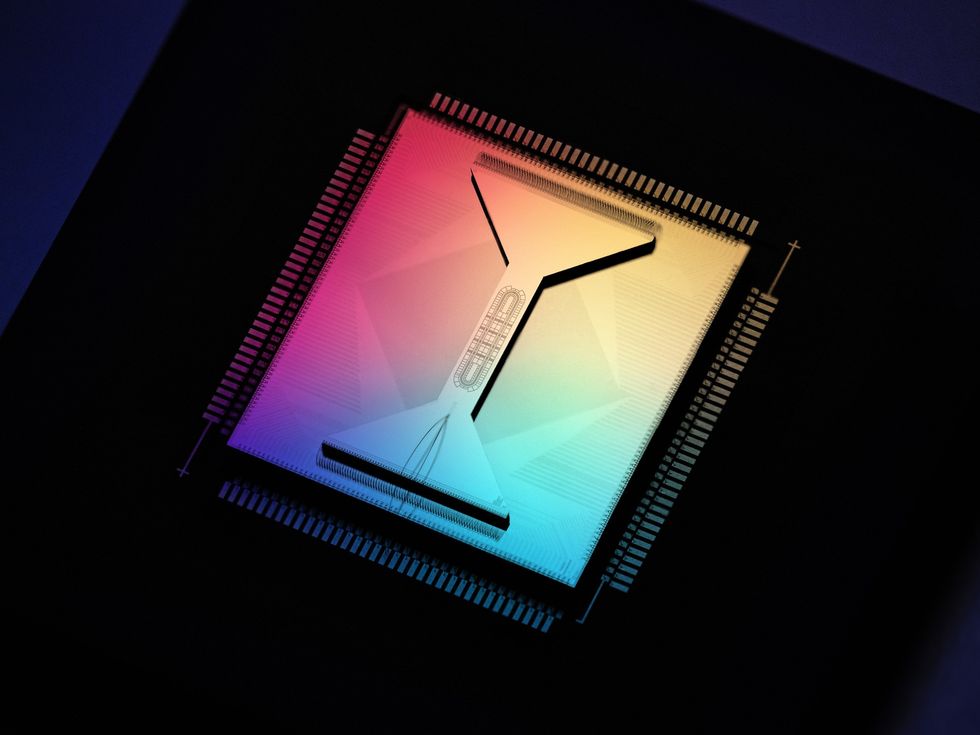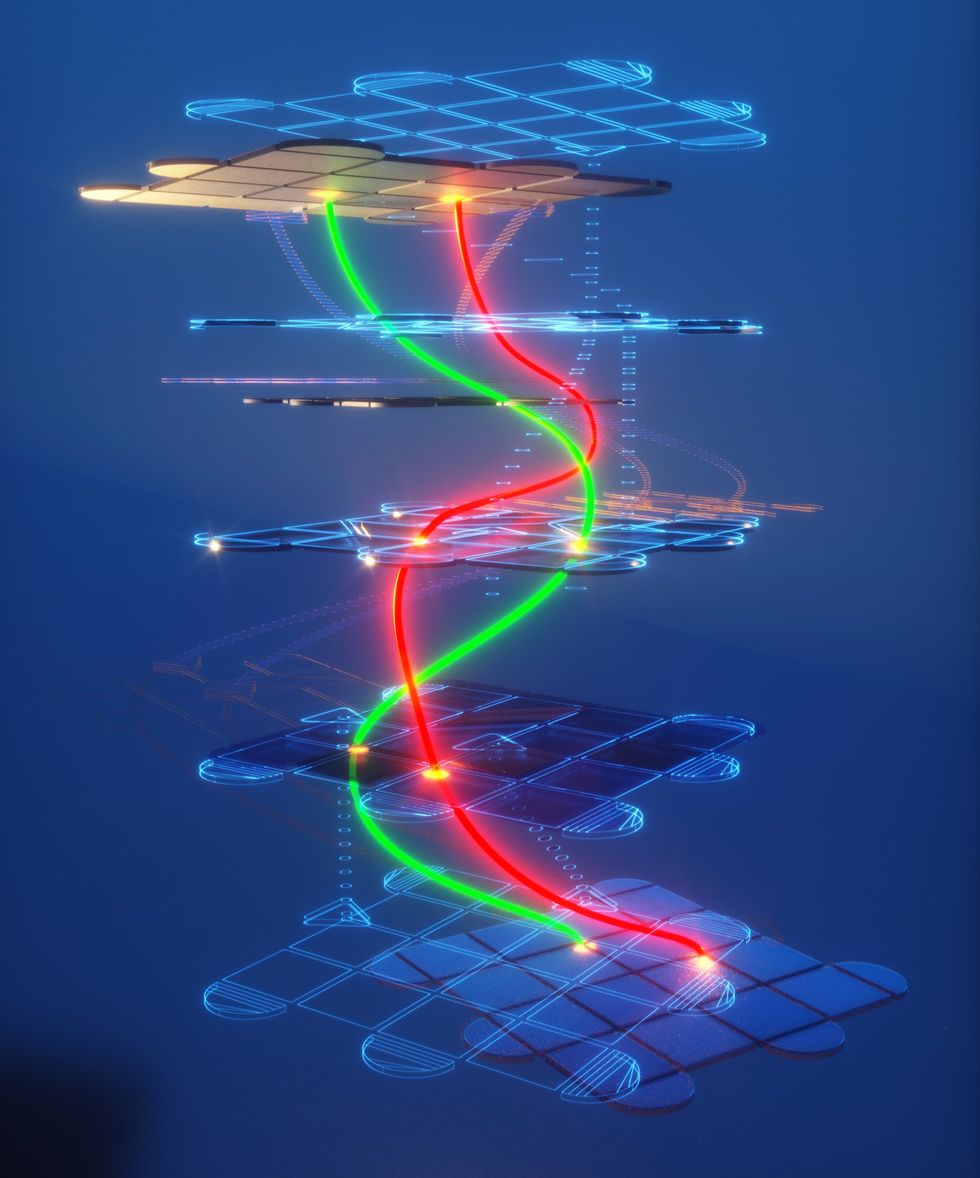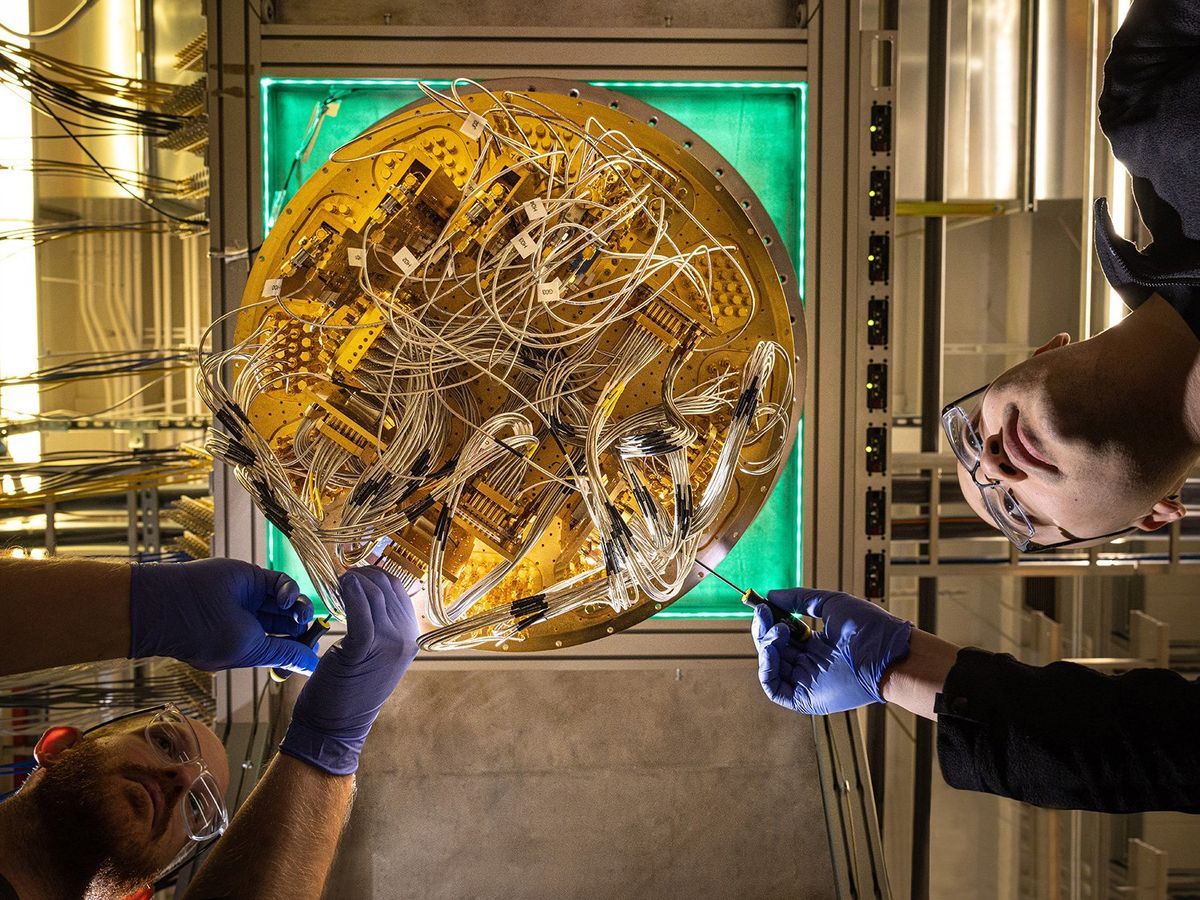The math that explains why a donut is really the same shape as coffee mug but not a waste bin could be the key to making quantum computers practicable. Two teams of researchers have used topology, a centuries-old field of mathematics, and a new kind of “quasiparticle” to come up with an error-correction technique for quantum computers that could leave others developed to date in the bin.
Error-correction systems are essential to quantum computers, because the unprotected quantum bit (qubit) is such a perpetually delicate thing—often a single particle or quantum state that is forever at the mercy of thermal or random noise in the system. And because qubits are typically quantum mechanically interconnected with one another—to use the jargon, qubits are typically entangled—knocking just one or two out of commission can affect the whole system.
The hunt for the best quantum error-correction systems today takes many forms. Quantum error-scrubbing prototypes, techniques, and inventions regularly emerge from labs, startups, and aspiring quantum-computing behemoths around the world. But a new development harnesses a long-elusive quasiparticle whose behaviors might be bent to suit the most pressing needs of the perpetually finicky qubit. Two companies—Google’s Quantum AI unit and the Broomfield, Colo.–based startup Quantinuum—now vie for discovery rights to a quantum entity called the non-Abelian anyon.
New states of matter for solving old problems
Non-Abelian anyons exist in two-dimensional spaces, such as surfaces or planar material like graphene, and display a peculiar kind of individuality mandated by the laws of quantum physics. Unlike completely interchangeable particles like electrons and photons, non-Abelian anyons can be made distinguishable enough from one another to trace out distinct trajectories, potentially tying knots and twists around each other in the process. (Topology is the study of, among other things, these very same knots and twists. Which is why the non-Abelian anyon is a creature of what’s called topological quantum computation.)

“We used the entanglement of qubits to create an environment where you can then make these anyons,” says Tony Uttley, Quantinuum’s president and chief operating officer. “It’s a quantum state of matter that we can now create inside of a quantum computer.”
The compelling feature of this new breed of quasiparticle, says Pedram Roushan of Google Quantum AI, is the combination of their accessibility to quantum logic operations and their relative invulnerability to thermal and environmental noise. This combination, he says, was recognized in the very first proposal of topological quantum computing, in 1997, by the Russian-born physicist Alexei Kitaev.
At the time, Kitaev realized that non-Abelian anyons could run any quantum computer algorithm. And now that two separate groups have created the quasiparticles in the wild, each team is eager to develop its own suite of quantum computational tools around these new quasiparticles.
“The beautiful idea is if you have two particles, you can move them around each other while keeping them apart,” protecting them from interactions that could collapse their delicate quantum states, Roushan says. “The magic is that…when these particles execute a particular braid, these protected bits can actually flip.”
What does a topological quantum computer look like?
Quantinuum, along with collaborators at Harvard and Stanford Universities, uploaded a paper to the Arxiv preprint server last month announcing their creation of non-Abelian anyons in the company’s H2 quantum computer, each of whose 32 qubits are individual ytterbium ions inside an electromagnetic trap. “That trap sits inside a basketball-sized ultrahigh-vacuum chamber,” Uttley says.
Meanwhile, the Google Quantum AI team and an international consortium of collaborators published a paper in Nature this month—having first uploaded it to the Arxiv server last October. This group also reported the creation of non-Abelian anyons of a different sort.
Google’s team made its non-Abelian anyon discovery on a quantum computer built around superconducting qubits that are composed of Josephson junctions and other circuit elements such as inductors and capacitors.

The qubits are essentially inductor-capacitor oscillators, says Google Quantum AI team member Trond Andersen of the qubits in the Google system. “But they are made with Josephson junctions. And the beauty of them is when we cool them down, we can see the quantized levels of this oscillator. And those quantized levels are what we use as our zero and one.”
Chetan Nayak an expert on non-Abelian anyons and topological error correction at Microsoft Research in Santa Barbara, Calif., confirmed the significance of the new research. He described Quantinuum’s work, as an “impressive scientific demonstration” that “validates Microsoft’s longstanding belief that engineering an error-protected topological qubit is the path to delivering quantum computing at scale.”
And as the electron hole is to the everyday operations of semiconductors and CPUs, according to these researchers at least, the new quasiparticle may be the bridge that’s needed toward a kind of topologically protected entanglement that can begin to deliver on quantum computing’s outsize promise.
- Major(ana) Backpedaling: Microsoft-Backed Quantum Computer Research Retracted ›
- Topology: Mapping Quantum Computing’s Safe Haven ›
- The First Mechanical Qubit - IEEE Spectrum ›
- Microsoft's Topological Qubit Claims Create Mixed Reactions - IEEE Spectrum ›
Margo Anderson is senior associate editor and telecommunications editor at IEEE Spectrum. She has a bachelor’s degree in physics and a master’s degree in astrophysics.



